PAINTING FURTHER
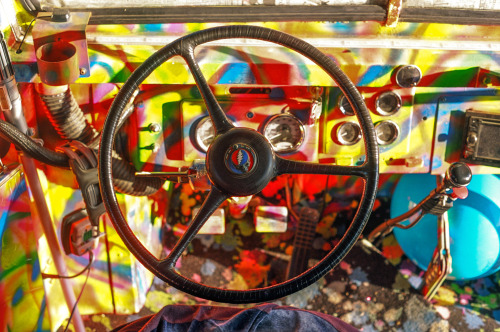
Buy the ticket, take the ride. View from the driver’s seat of the bus.
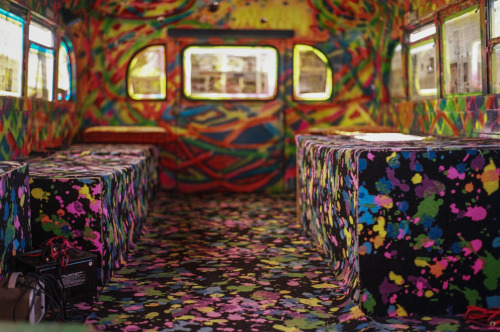
It was the summer of 2015. The Dead were back on the road (RIP Jerry). The Merry Pranksters were getting ready to celebrate their 50th anniversary with a big Burning Man-esque festival in Chicago. And Further, the psychedelic bus, created by Ken Kesey, currently maintained by his son, Zane, needed a fresh look. It was for these reasons, and others, that my friend Peter Crabtree and I were driving across country in late May.
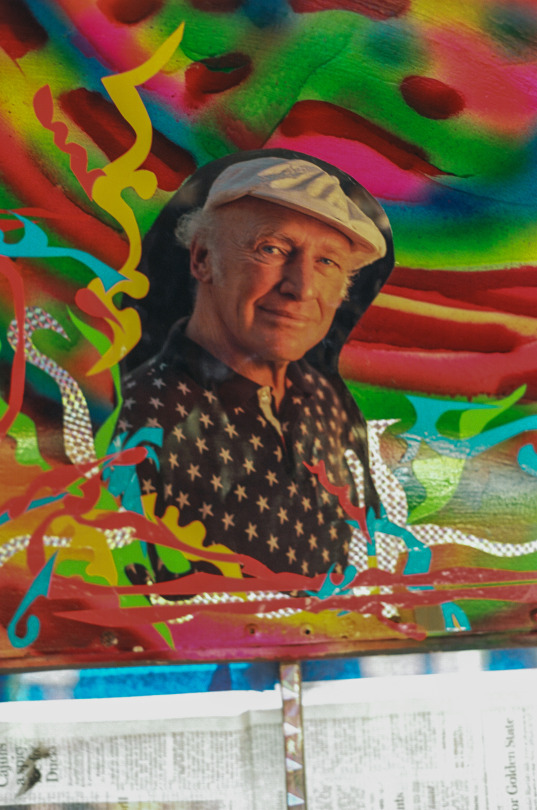
It’s difficult to put a label on somebody that’s responsible for so much. I’m not sure the myth of the man could ever live up to the man himself. Today Ken Kesey is best known for, One Flew Over the Cuckoo’s Nest, which he penned at the ripe age of 24 years old. Mainstream media will always connect Kesey to the LSD movement in the 60s through Cuckoo’s Nest, which was based on Kesey’s experiences testing then mostly unknown psychoactive substances for the CIA (Project MKULTRA), and later through the Acid Test parties, a country-wide spectacle featuring music from The Grateful Dead (then known as the Warlocks), as well as films, and of course LSD. But to many, Ken’s greatest legacy will always be Futher, the original 1939 harvester that he drove for five short years before nearly destroying the thing after running it into a swamp on the family farm after Woodstock in ‘69. In 1990, “Further II”, as some people refer to it , was born and still runs today. Ken actually got more use out of the second bus than he did the first.
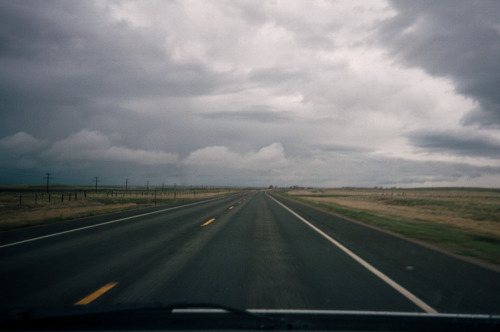
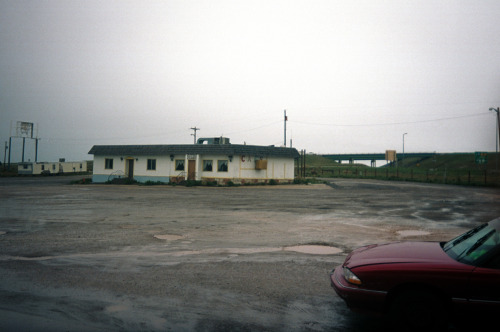
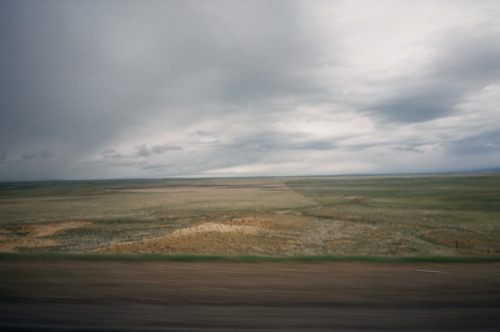
After charging across the country in a three-day stretch of mad driving through some of the loneliest states in America, Peter and I arrived in Pleasant Hill, a tiny farming town in Oregon about 20 minutes outside of Eugene. We pulled over to the side of the road to freshen up. There, with the Kesey family farm just on the other side of a few parcels of hay fields, for the first time I began to think seriously about what I was getting myself into, specifically what I would actually be doing for the next six days and who I would be hanging out with, the details of which were unknown to both Peter and me, aside from the fact that Ken’s son, Zane, had approved me to film. I felt slightly nervous of the unknown but excited at the same time like my mom was dropping me off for the first day of summer camp.
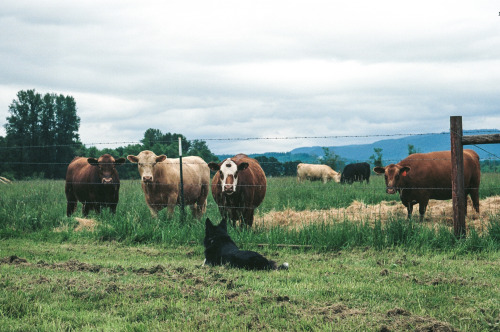
“Don’t want to show up to the Kesey farm smelling like a dog,” Peter joked, snapping me — out of it.
Whatever hesitations I had pulling into the driveway that day, they were forgotten when I met Zane, Ken’s second oldest, the current skipper to Further, and the reason we were all here (by all of us, I mean 6 people at the time of our arrival. Numbers grew to over 50 by the final days).
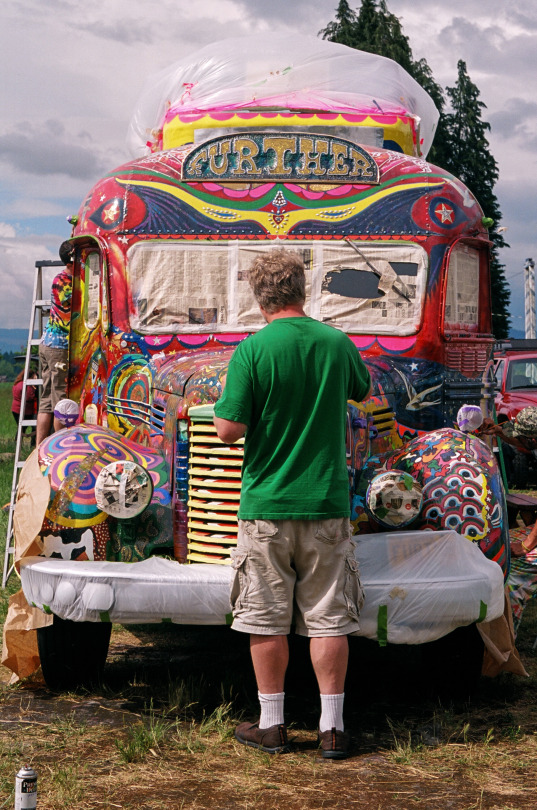
Zane Kesey, the heart and soul of the bus.
Zane greeted us with the friendliest of hugs and a pleasant smile that made me feel like we were old friends. A spitting image of his father, Zane is a big bear of a man, built like an athlete with silver toned hair and a childlike grin that gave him the charm of someone much younger. He was the type of person who liked to get his point across with as few words as possible and had a knack for boiling ideas down to simple parables and phrases that often went right over people’s heads. Sometimes finding ways to incorporate a quote or section from a song in the process. His first and only real question to Peter and me was, “are either of you actual painters?”
There was nobody policing the party. A 8 ½ x 11 notice next to the entrance to the barn instructed people not to roam around the property or go inside the house and encouraged everybody to use the grass as a place to pee and not the porta potty. Other than that, everyone did mostly what they wanted, some more discreetly than others. Still, “fun” was always overshadowed by work.
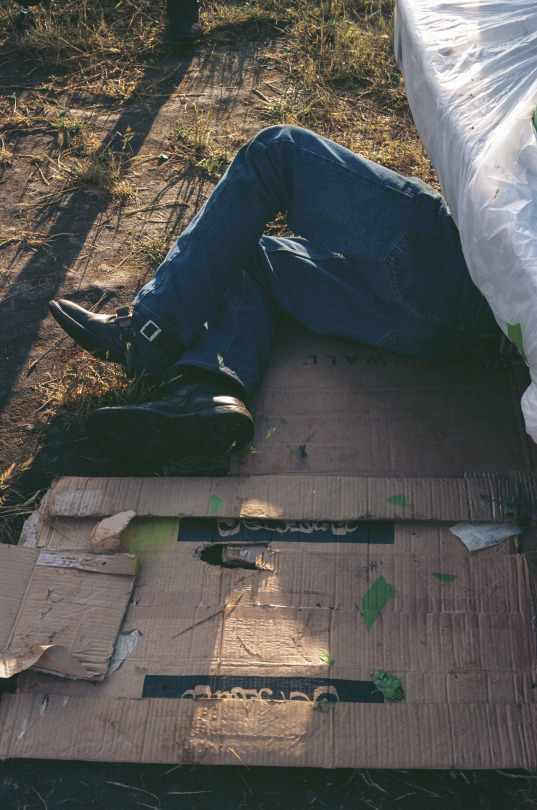
People painted and worked on Further around the clock, tirelessly trying to fit in as much as possible by day’s end. Peter and I weren’t the only ones to have driven several thousand miles to lend our hands to Further. All sections of the country were well represented; people showed up from other parts of the east coast, midwest and of course the states in and around Oregon. The enthusiasm was contagious.
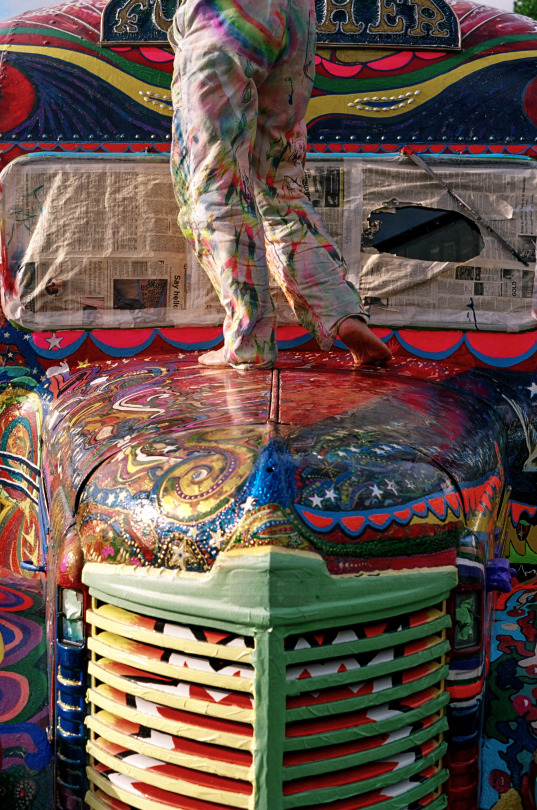
Thumpah on the hood
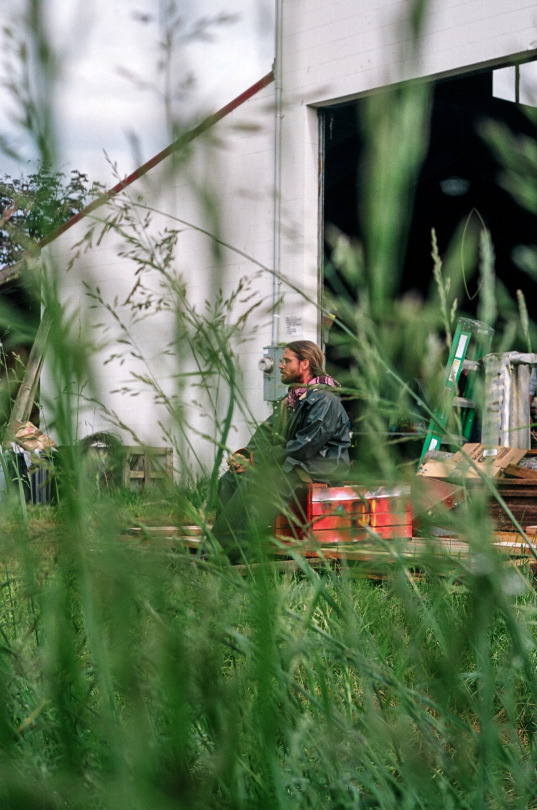
Scottie, the man responsible for the lights on the bus
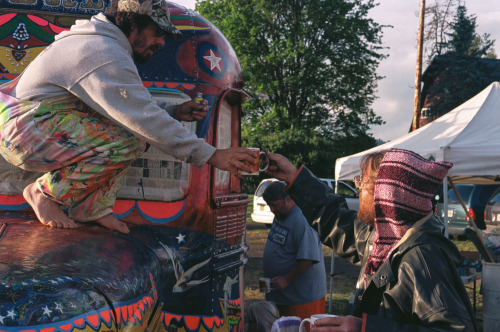
Scottie passing Thumpah a cup of coffee and ‘Big Al’ Jenkins working on Further in the background
Zane had this omnipresence to him that I think encouraged people to keep on painting, or at least make it look like they were doing something else important. Everything from the constant flow of coffee and THC, to figuring out what to put where on the bus was necessary to help move things along. People helped out accordingly.
At the time, I thought the finish line was Chicago. The Grateful Dead were playing their final shows there and Further was planning on making an appearance. Months later though, the bus never made it east of the Cascades and I realized the point of the paint party was to help maintain Further’s legacy, not make it to any specific destination.
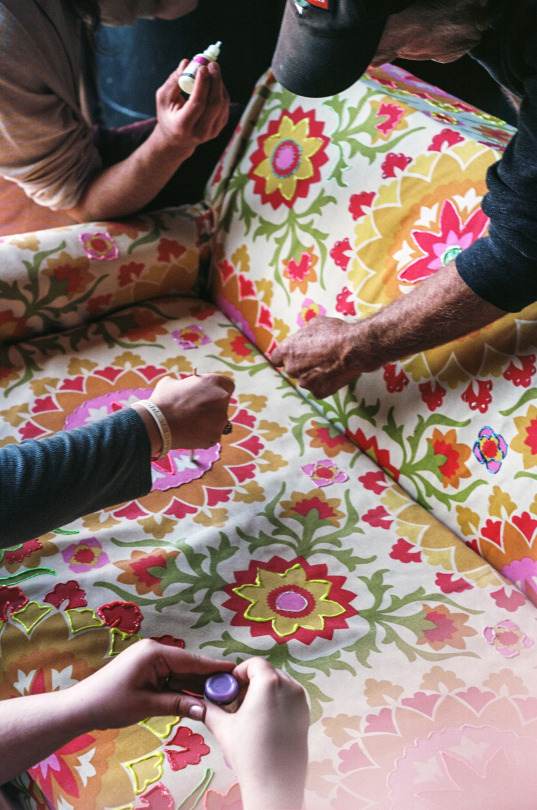
We worked like art restorers, enhancing faded colors and trying to honor certain, already existing elements. Most everybody managed to make some sort of original contribution as well. I was drawn to a florescent green bottle of acrylic paint, a brush, and the driver’s side of Further.
“Far out, man,” Zane said, reassuring me that I was on the right track with the green. Nothing went on the bus without his approval. He had a vision for how she should look that he kept mostly in his head with a very effective way of making sure certain aspects remained unchanged (paint thinner worked well).
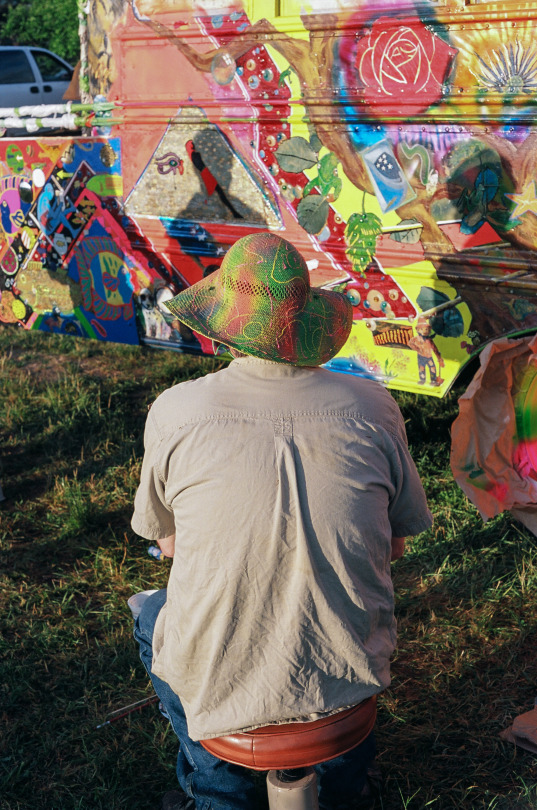
Painting was a real Zen experience for me. Sitting there for hours, not paying attention to the time, only to colors and shades and tones of what was in front of me. I found myself at times getting lost in a maze of artwork. An hour went by in 15 minutes. Our collective painting skill levels ranged from professional to preschool, but everybody managed to find their place on the bus.
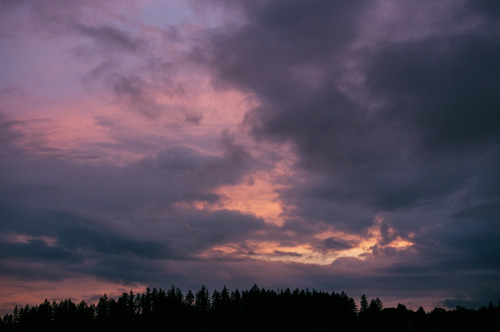
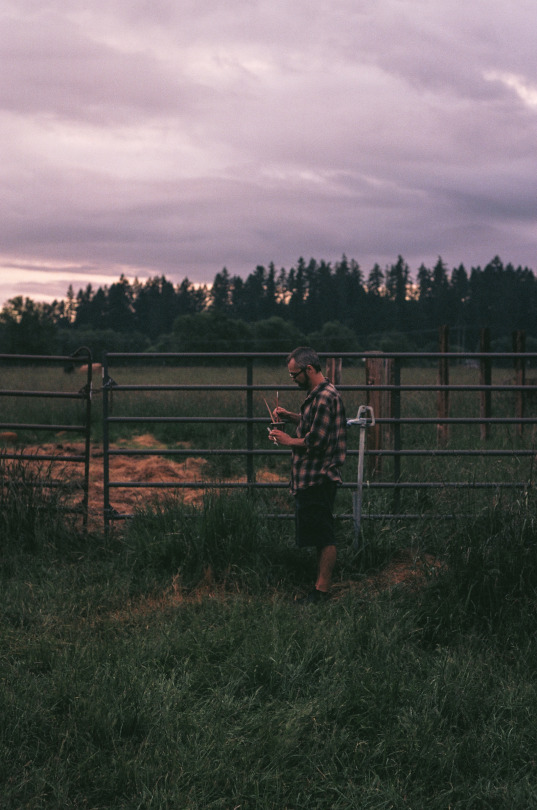
The Kesey farm was a lovely backdrop to the canvas of Further. Tucked away from the mountains on several acres of verdant land that still produced hay fields, the days would go from cloudy and partly rainy earlier in the day, to sunny and beautifully lit by sunset. When it got wet, the bus went inside the barn and we painted indoors until the rain passed. Paint went on Further until the last minutes of each day, when Zane would eventually wrap things up and pull the bus back into the barn in a big ritualistic fashion that inspired me more everyday.

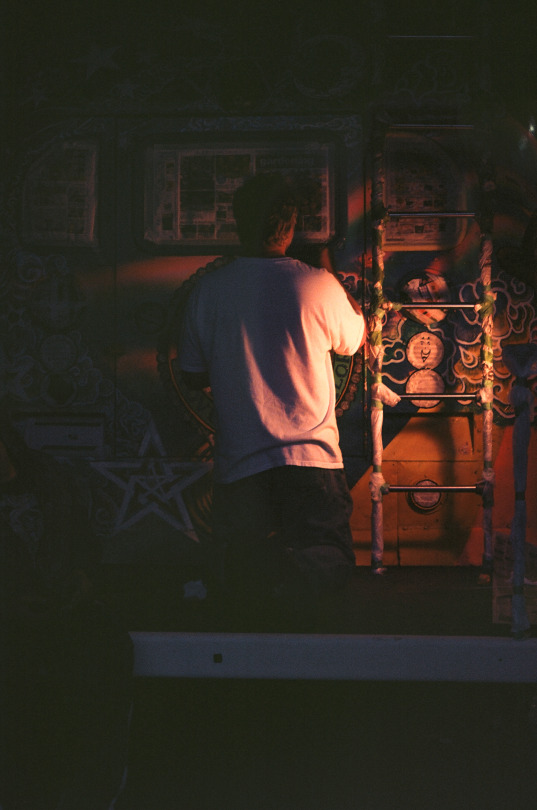
Zane Kesey in the barn that his Dad built, putting final touches on the back of Further for the day.
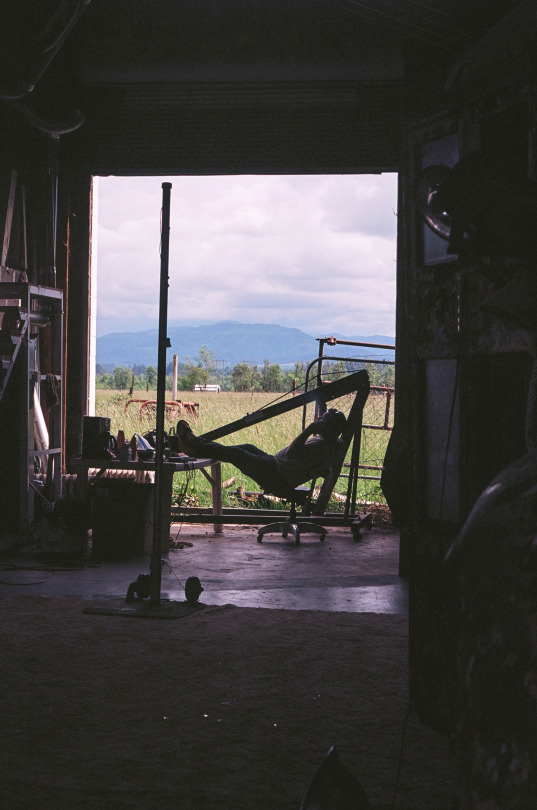
Derek Stevens, the right-hand man to the bus’ pulse (Zane), talking on the phone in the barn.
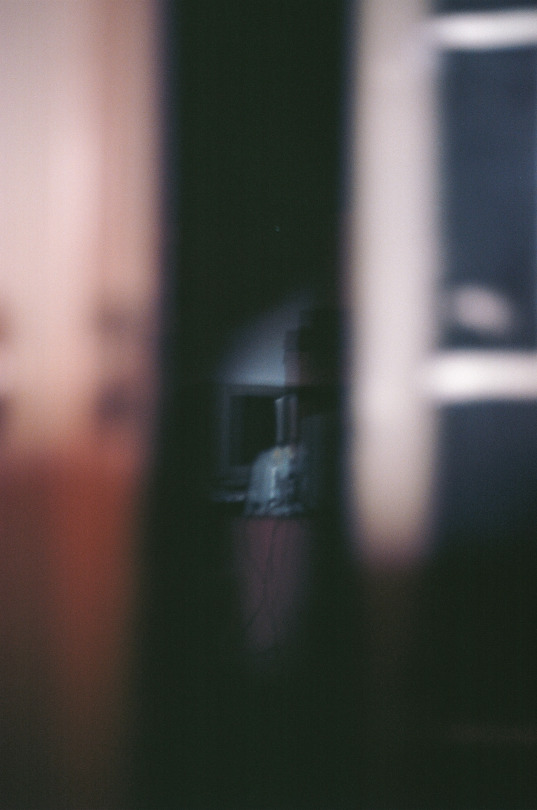
“The Vault” strictly off limits.
The barn, originally built by Ken, his workshop and sanctuary, had been turned into a museum of sorts, filled with stories, memories and symbols, the knowledge of which were passed down by those closest to Zane, many of whom knew Ken personally.
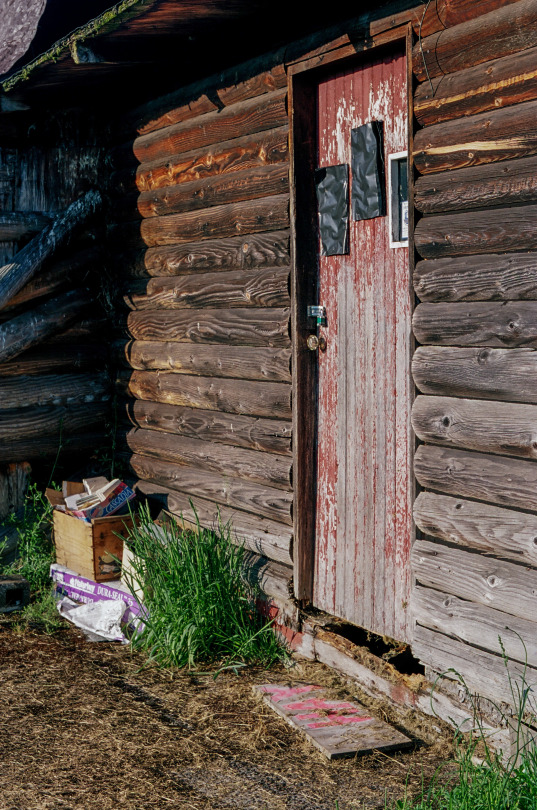
The original family house where Ken permanently relocated in ‘65.
We had full access to the bus and most of the barn, but many places on the farm were private: the new house, the shed, which was the original family home, the mysterious and definitely off-limits “Vault”, and the many acres of land surrounding the property.
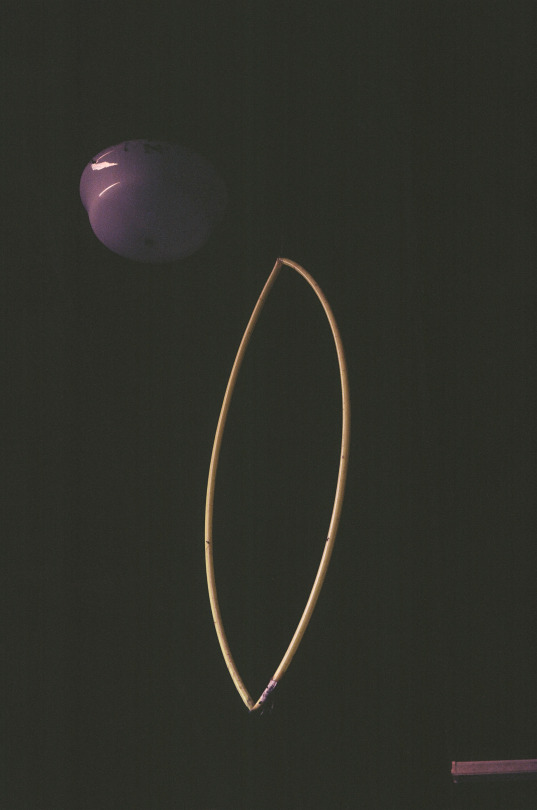
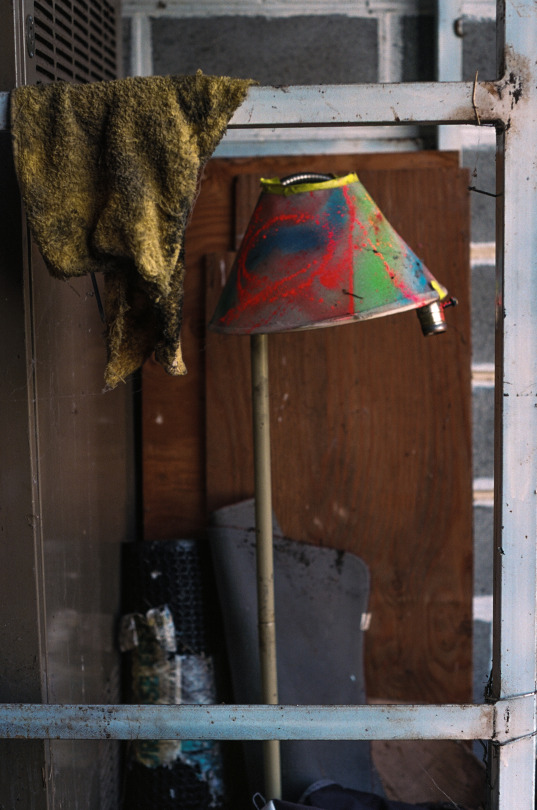
Ken’s influence was endless, his fingerprints everywhere, his presence still felt on a near constant basis. A seemingly random array of tools outlined and colored in day-glow could be a coded message, or a piece of paper an explanation of one of Ken’s hijinks. Depending on who you ask.
If any of this sounds a little confusing, remember the Pranksters’ very own motto is, “Never, always trust a Prankster”. I don’t think it’s the intention of the Pranksters’ to be spreading malicious misinformation, I think instead they’re trying to show people that “the truth” lies in our perception of our “reality”.
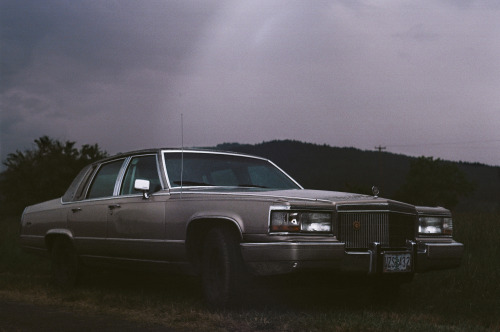
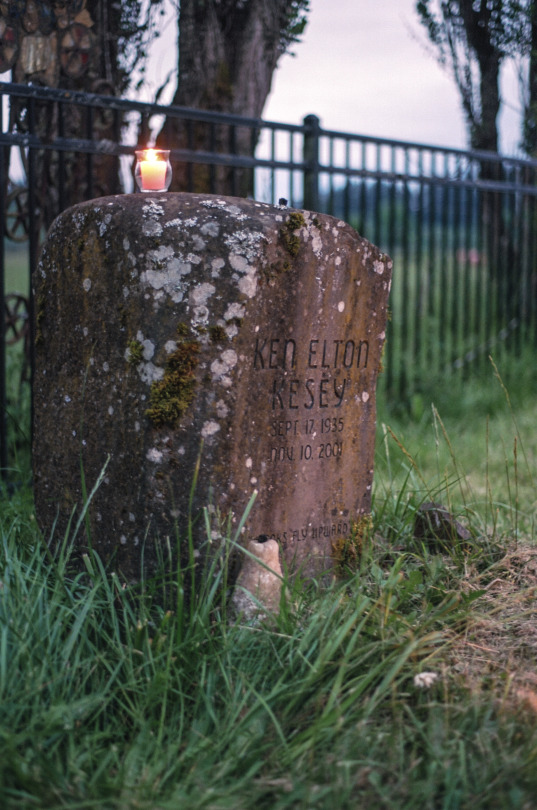
On one of the last days of painting, I returned from a booze run with Pesky, one of Zane’s cohorts. Alcohol was generally frowned upon while working but this was the last day of official painting and Derek Stevens, one of the key planners and orchestrators of last year’s 50th anniversary tour, had requested gin specifically for later that night. We happened to arrive back at the farm precisely at the moment Zane started leading the entire collective to Ken’s grave for an impromptu candle vigil. The moment was life-changing for me, and I almost missed it getting alcohol. Showing up, just at the right time (during magic hour, no less), reminded me that being here was no coincidence. That my interest in Ken and the Pranksters didn’t just start a few days ago. It started when I was kid. I myself, and pretty much all the other painters told a similar story of discovering the world of Ken Kesey, always through his earliest works. Honoring Ken at his grave reconnected me with my interests as a teenager and reminded me of the kid and the freak that will always be inside of me, reassuring me, that that’s okay.
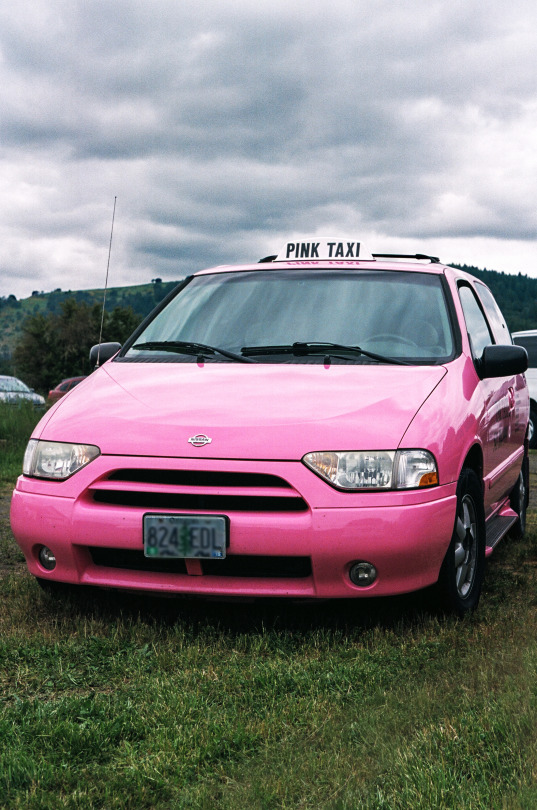
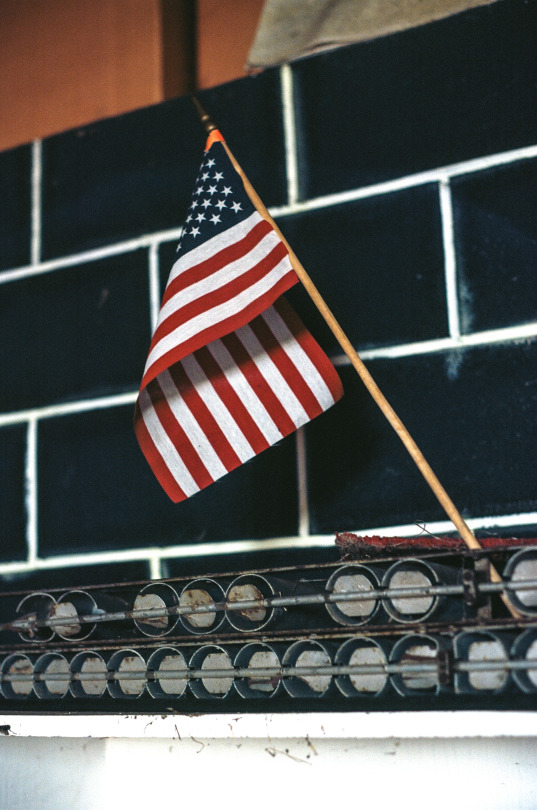
Freedom and the right to be yourself are two things that Further has always represented. Legend has it that Ken purchased the original 1939 Harvester thanks to the findings and guidance of Prankster Ken Babbs. Further was Ken’s attempt to figure out a way to freely transport his group of friends across country on his own terms. People often misassociate the bus with LSD and drugs, but LSD was only a small part of the first chapter of Further, back in the 60s when the substance was legal and relatively unknown (Ken Kesey and the pranksters distanced themselves from publicly endorsing LSD after it was made criminal in ‘65). The real story behind Further has always centered around the idea of group consciousness. All for one and one for all, in it’s truest essence, I think a very American value. Ken put it best, “you were either on the bus, or off the bus.” In actuality, the bus has nothing to do with any drug or mind-altering substance. Instead it stands as a symbol for civil rights, a beacon of hope for people of all backgrounds and walks of life to come together — “the Liberty Bell,” as Scottie puts it.
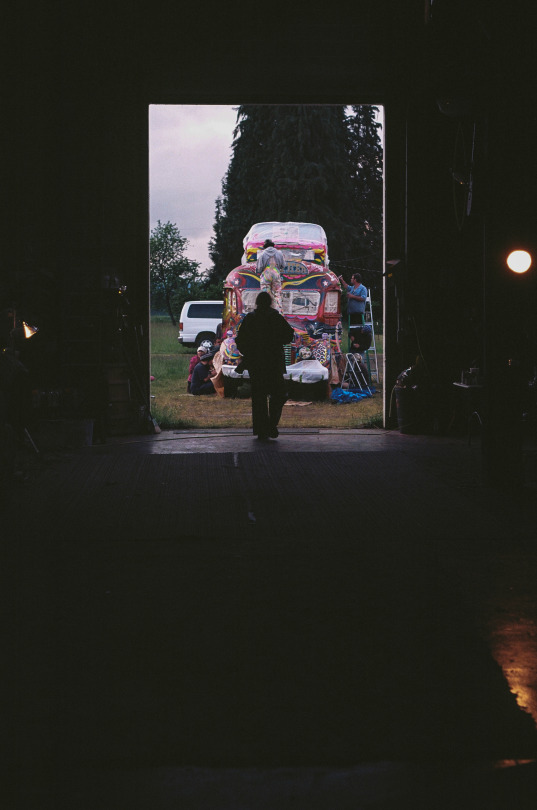
As my six days on the Kesey farm came to a close, I felt overwhelmed by a better understanding of what Further represented. Although the only contribution I made to the actual painting of the vehicle was that lone streak of vibrant florescent green along the driver’s side panel, I still felt good knowing that I not only made my mark on history (painting the bus) but I also successfully documented a rare event that will surely be remembered and retold by everyone that was involved, for the rest of their lives.
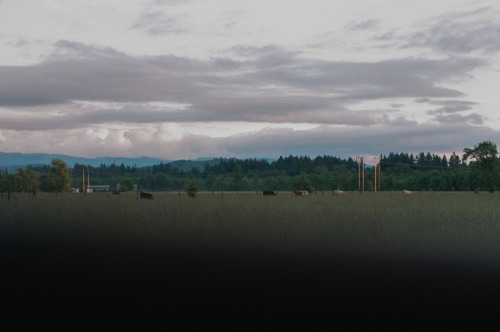
There’s an interesting phenomenon that happens on the Kesey farm when you get further away from the house. The air sometimes gets so quiet, you can hear somebody talking from what looks and feels like hundreds and hundreds of feet away, as if they were standing right next to you. There are almost no private conversations or experiences on this farm. If somebody else doesn’t hear you, the cows, coyotes or chickens will. There is a connectedness, energy, and pulse that exists naturally that I’ll never forget.
Story and photos by Lexis-Olivier Ray
-
 wolfpackzach likes this
wolfpackzach likes this
-
 highschoolpoppers posted this
highschoolpoppers posted this
